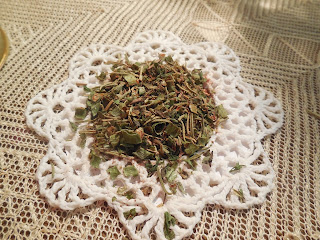I read a lot of old cookbooks and recipes. In fact I sell vintage cookbooks on Etsy under my own name. I like these old books because they intrigue me with the cycle of seasonings and changes in the palate. For example my modern palate cannot fathom making or serving tomato aspic yet no 50’s housewife entertained without some sort of molded salad.
In one book I read that a recipe should contain just one or two herbs, and a meal should include only one herb-seasoned dish. In my mind a rule that limiting is made to be broken. I rarely add only one herb to a dish, in fact I teach people to think in three when working with herbs.
Last week I posted a short blog about this concept and got requests to expand it, so here is more detailed information on the three flavors of herbs and how to combine them.
Choose Herbs based on Sweet, Savory and Pungent
When planning to cook with herbs you need to recognize that they have different strengths.
When planning to cook with herbs you need to recognize that they have different strengths.
- Sweet
- Savory
- Pungent
Sweet flavors include anything that would pair well with fruits or yogurt, like flower flavors, dill, and citrus herbs like lemon balm, lemon marigolds, most flowers, sweet basil and mints.
Savory are the cooking flavors we all recognize, like thyme, tarragon, oregano, marjoram, savory, robust or spicy basils, and others.
Pungent are those herbs whose flavor and scent is strong and hard to mistake, including cilantro, sage, rosemary, chili peppers and garlic.
 |
| sage |
My rules for working with three herbs are:
- 2 sweets and a savory
- 2 savories and a sweet
- 1 sweet, 1 savory and 1 pungent
- 2 savories and a pungent
- 3 sweets (for a sweet or fruity dish)
- 3 savories
- 2 sweets and a pungent
Although I could craft a chart for you, it is really best if you make your own based on your tastes. So instead I created a blank Herb Chart and put it on the Blog Pages so you can print it and fill it out your way.
Come back tomorrow and check out the recipes I have chosen that use three herb combinations.



Great content, I did't know that this is also possible on blending herbs, I will buy herbal incense wholesale online and undergo in procedures.
ReplyDelete